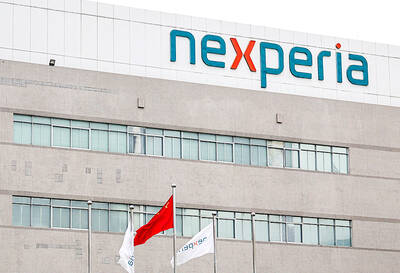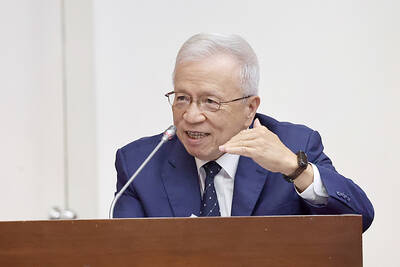Start-up tech firms are racing to transform the way rare earths are refined for the clean energy transition, a push aimed at turbocharging the West’s expansion into the niche sector that underpins billions of electronic devices.
The existing standard to refine these strategic minerals, known as solvent extraction, is an expensive and dirty process that China has spent the past 30 years mastering. MP Materials Corp, Lynas Rare Earths Ltd and other Western rare earths companies have struggled at times to deploy it due to technical complexities and pollution concerns.
Rare earths are a group of 17 metals used to make magnets that turn power into motion for electric vehicles, cellphones and other electronics. While US scientists helped develop solvent extraction for rare earths in the 1950s, radioactive waste from the process made it unpopular in the US.
China began to rapidly expand in the industry during the 1980s and now controls 87 percent of global rare earths refining capacity, the International Energy Agency says.
That prowess has helped propel the country’s economy to the second-largest in the world.
Emerging Western rivals now offer the tantalizing prospect of processing the minerals in faster, cleaner and cheaper ways, if they can successfully launch.
“The existing rare earths refining process is a nightmare,” said Isabel Barton, a mining and geological engineering professor at the University of Arizona. “That’s why there are so many companies promising new methods, because we need new ones.”
Interviews with nearly two dozen industry consultants, academics and executives found that if one or more of these novel processing technologies succeed as hoped by 2025, they could slash reliance on Chinese rare earths technology and its toxic by-products, while also bolstering plans by Western firms to charge premium prices for the strategic minerals.
BIG GOALS
While none have launched commercially — and some industry consultants and analysts question whether they will be able to do so soon — a cadre of firms are pushing forward with aggressive development plans.
On a former US Air Force base in Louisiana, Ucore Rare Metals Inc aims to process rare earths by mid-2025 using a technology known as RapidSX, which it says is at least three times faster than solvent extraction, produces no hazardous chemical waste and requires only one-third of the physical space.
“Our goal is to re-establish a North American rare earths supply chain,” Ucore chief operating officer Michael Schrider said during a visit to the site.
Formed in 2006, Ucore initially planned to mine a rare earths deposit in Alaska, but it changed tack last year to focus on refining, not mining, a pivot born from what two executives said they saw as a flaw in the West’s strategy to weaken China’s minerals dominance by trying to master both steps simultaneously.
Ucore, which has been testing its process with Pentagon funding, is in talks with 17 mining companies to buy lightly processed supplies of rare earths known as concentrate, ship them to the Port of New Orleans, then truck them to a 7,507m2 warehouse that is to be outfitted with the RapidSX technology beginning next month.
Rare earths miners increasingly say they are content to focus on digging up rock, rather than compounding their operations with the added step of processing.
“Mining companies should focus on finding new deposits,” said Luisa Moreno, president of Defense Metals Corp, which aims to open a rare earths mine in British Columbia within four years and is interested in licensing Ucore’s technology.
“You probably should let refining be handled by others that specialize in that,” Moreno said.
Rainbow Rare Earths plans by 2026 to deploy rare earths refining technology in South Africa developed by its Florida-based partner K-Technologies, which uses a process known as continuous ion exchange, used by some lithium producers.
Start-up Aether is developing nanotechnology that programs proteins to selectively bind with and extract rare earths from ore deposits.
In Norway, privately held REETec AS says its proprietary refining process emits 90 percent less carbon dioxide than solvent extraction and should be operational by late next year.
Privately-held Phoenix Tailings earlier this year began refining small amounts of rare earths in Massachusetts using a process that it says is free of emissions and waste.
“There are technologies that can be developed that are far better than solvent extraction,” said Robert Fox, a scientist at the US Department of Energy’s Idaho National Laboratory.
The lab last month agreed to research new refining techniques for privately held US Critical Materials Corp, which is developing a rare earths deposit.
SKEPTICISM
Despite the hunger for new refining techniques, industry consultants have said that manufacturers could be expecting too much, too soon from this so-far unproven group of nascent technologies, especially given the world’s aggressive electrification targets.
Ucore’s technology, for example, has never worked at commercial scale and is not expected to gain patent protection until next year, a time line that industry consultants flagged as a cause for concern given strong rivalries for intellectual property.
“The time horizon needed to develop all these new refining technologies will be longer than many expect,” said Frank Fannon, a minerals industry consultant and former US assistant secretary of state.
Talks of production within a few years “creates a false sense of security for policymakers.”
Yet the need for alternatives is rising, especially in the wake of Beijing’s decision earlier this year to curb exports of germanium, graphite and other metals. That has sparked concerns that rare earths could be next.
Fannon and several US politicians have called for Western governments to create central rare earths processing hubs, a plan already being pursued by Canada.
In Saskatchewan, government scientists are working to launch their own rare earths processing technology after attempts to buy Chinese technology sputtered in 2020.
“We looked at existing technologies and said: ‘There’s a better way of doing this,’” said Mike Crabtree, CEO of the Saskatchewan Research Council (SRC), which is funded by the provincial government.
“We wanted to put our own spin on it,” he added.
Using artificial intelligence, the company designed processing equipment it believes is more efficient than Chinese rivals. Rather than needing up to 100 people to run, as with traditional solvent extraction, the SRC estimates that only four people would be needed to run its plant, which it hopes to open by the end of next year.
While the SRC’s goal is to spur mining across Canada, Crabtree said he is open to licensing the technology for use anywhere in the world.
“This entire sector as a whole needs to grow outside of China in order to support the energy transition,” he said.
Crabtree and the SRC expects its facility to cost more to build than Chinese rivals, but less to operate, a function of its desire to make processing equipment that has no waste and recycles acid and other key chemicals.
While MP Materials and others have struggled to tailor their processing equipment to specific geological deposits, SRC, Ucore and others say they believe their new refining processes would be capable of processing the critical minerals from multiple locations across the globe.

JITTERS: Nexperia has a 20 percent market share for chips powering simpler features such as window controls, and changing supply chains could take years European carmakers are looking into ways to scratch components made with parts from China, spooked by deepening geopolitical spats playing out through chipmaker Nexperia BV and Beijing’s export controls on rare earths. To protect operations from trade ructions, several automakers are pushing major suppliers to find permanent alternatives to Chinese semiconductors, people familiar with the matter said. The industry is considering broader changes to its supply chain to adapt to shifting geopolitics, Europe’s main suppliers lobby CLEPA head Matthias Zink said. “We had some indications already — questions like: ‘How can you supply me without this dependency on China?’” Zink, who also

At least US$50 million for the freedom of an Emirati sheikh: That is the king’s ransom paid two weeks ago to militants linked to al-Qaeda who are pushing to topple the Malian government and impose Islamic law. Alongside a crippling fuel blockade, the Group for the Support of Islam and Muslims (JNIM) has made kidnapping wealthy foreigners for a ransom a pillar of its strategy of “economic jihad.” Its goal: Oust the junta, which has struggled to contain Mali’s decade-long insurgency since taking power following back-to-back coups in 2020 and 2021, by scaring away investors and paralyzing the west African country’s economy.

BUST FEARS: While a KMT legislator asked if an AI bubble could affect Taiwan, the DGBAS minister said the sector appears on track to continue growing The local property market has cooled down moderately following a series of credit control measures designed to contain speculation, the central bank said yesterday, while remaining tight-lipped about potential rule relaxations. Lawmakers in a meeting of the legislature’s Finance Committee voiced concerns to central bank officials that the credit control measures have adversely affected the government’s tax income and small and medium-sized property developers, with limited positive effects. Housing prices have been climbing since 2016, even when the central bank imposed its first set of control measures in 2020, Chinese Nationalist Party (KMT) Legislator Lo Ting-wei (羅廷瑋) said. “Since the second half of

AI BOOST: Next year, the cloud and networking product business is expected to remain a key revenue pillar for the company, Hon Hai chairman Young Liu said Manufacturing giant Hon Hai Precision Industry Co (鴻海精密) yesterday posted its best third-quarter profit in the company’s history, backed by strong demand for artificial intelligence (AI) servers. Net profit expanded 17 percent annually to NT$57.67 billion (US$1.86 billion) from NT$44.36 billion, the company said. On a quarterly basis, net profit soared 30 percent from NT$44.36 billion, it said. Hon Hai, which is Apple Inc’s primary iPhone assembler and makes servers powered by Nvidia Corp’s AI accelerators, said earnings per share expanded to NT$4.15 from NT$3.55 a year earlier and NT$3.19 in the second quarter. Gross margin improved to 6.35 percent,